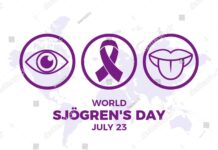Recently, we examined a few things about stroke. Based on my last article, you will agree with me that strokes are not to be treated with levity. A stroke is a life-threatening medical condition which occurs when the flow of blood to a part of the brain is reduced drastically or cut off. The major causes of stroke which we identified very briefly are:
- Haemorrhagic
- Ischemic
- Transient ischemic attack (also known as ministroke)
Haemorrhagic stroke
This type of stroke occurs as a result of the bleeding or rupturing of a blood vessel in the brain. The blood that accumulates as a result of this type of stroke ends up compressing the surrounding brain tissue. Of the three causes of stroke, haemorrhagic strokes has been found to be responsible for about 13 percent of stroke cases.
When blood vessels become weak, often times they get ruptured leading to haemorrhagic stroke. Two conditions that result in brain haemorrhage are:
- Arteriovenous malformation: Here, you have a dense bunch of blood vessels that have been abnormally formed. One of these blood vessels can rupture and cause brain haemorrhage.
- Aneurysm: is a fluid filled region in the wall of a blood vessel. This region continues to grow weaker until rupture finally occurs.
There are two types of haemorrhagic stroke:
- Subarachnoid haemorrhage: Here, an artery that is present near or on the brain surface bursts causing blood to spill into the space that is between the skull and the brain surface. A sudden, severe headache is often the signal of this type of bleeding. It is commonly caused by aneurysm.
- Intracerebral haemorrhage: In this case, a blood vessel present in the brain bursts and then spills into the brain tissues nearby causing destruction of brain cells. Even the brain cells beyond the leak are damaged as a result of being deprived of blood. Causes of this type of haemorrhage include:
- High blood pressure
- Use of blood-thinning medications
- Vascular malformations
- Trauma
Ischemic stroke
This occurs when the arteries to the brain become blocked or narrowed. This causes a great reduction in blood flow known as ischemia. Almost all strokes (about 85 percent) are ischemic strokes. Two major examples of ischemic strokes are:
- Embolic stroke: This occurs when a blood clot that was formed elsewhere other than the brain (often times in the heart) is carried and deposited in narrower brain arteries. This type of blood clot is known as embolus.
- Thrombotic stroke: In this case, a blood clot is formed in one of the arteries that supplies blood to the brain. The cause of this clot could be fatty deposits which gathers in arteries and end up causing reduced blood flow.

Transient ischemic attack
A transient ischemic attack (TIA) is a stroke in which you experience the symptoms briefly. In other words, the symptoms come and go quickly. This type of stroke is usually experienced when the supply of blood to part of the brain is briefly cut off. The symptoms of a TIA are sudden and do not last as long as the other causes of stroke. These symptoms include:
- Loss of coordination or balance
- Troubled vision in one or both eyes
- Weakness or numbness on one part of the body
- Trouble speaking or confusion or understanding speech
The symptoms of a TIA usually disappear before an hour passes but they may also last up to 24 hours. Truth is you really cannot tell if these symptoms are from a stroke or a TIA and so the best thing to do is to seek medical attention immediately you experience these. Usually, TIAs are a warning signal for future strokes.

Prevention
As we have previously discussed, the risk of having a stroke can be prevented through a healthy lifestyle. Exercise must be regular. If you must take alcohol, do so moderately. QUIT SMOKING.
How has this information helped you? Please share in the comment section below. If you have questions, click here to ask any one of our doctors.









